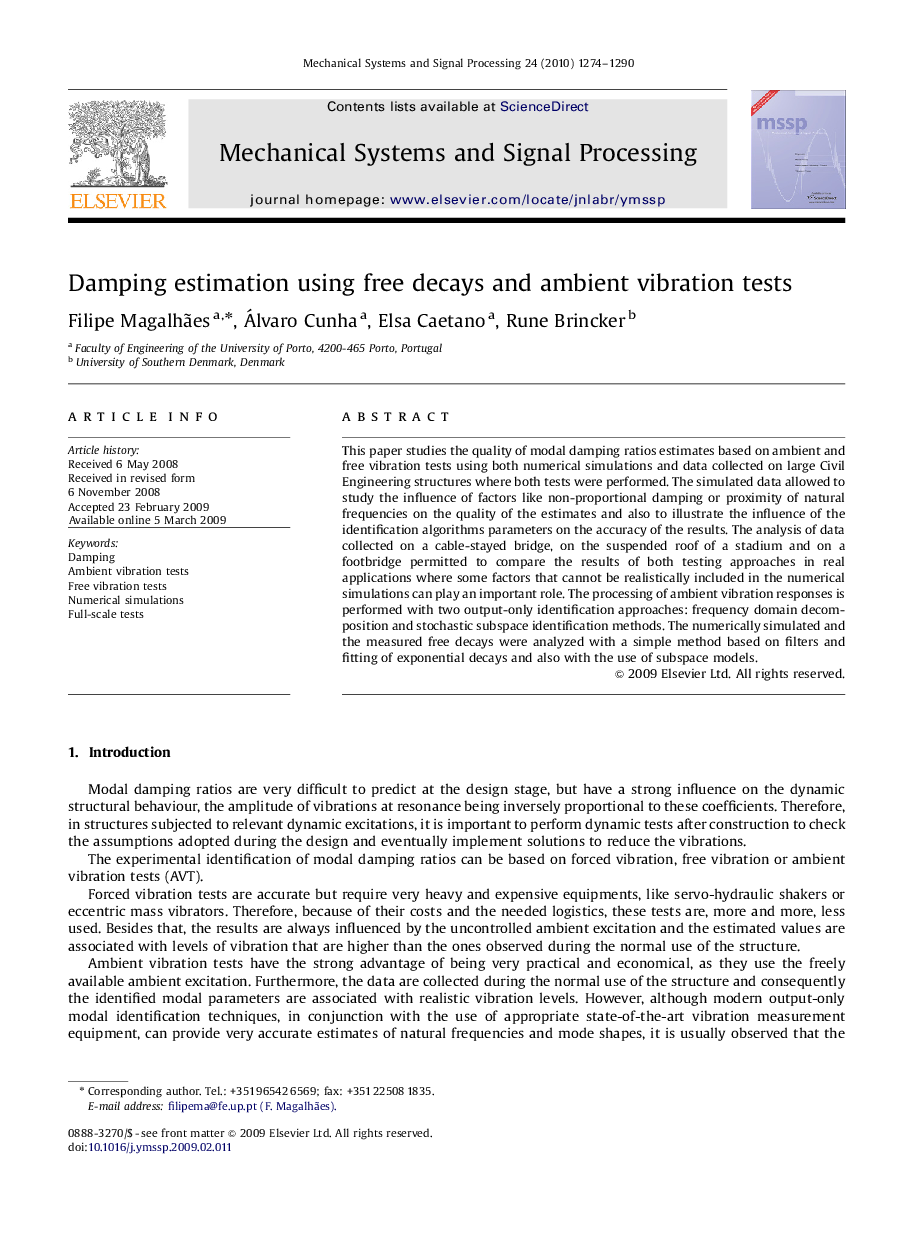| Article ID | Journal | Published Year | Pages | File Type |
|---|---|---|---|---|
| 561722 | Mechanical Systems and Signal Processing | 2010 | 17 Pages |
This paper studies the quality of modal damping ratios estimates based on ambient and free vibration tests using both numerical simulations and data collected on large Civil Engineering structures where both tests were performed. The simulated data allowed to study the influence of factors like non-proportional damping or proximity of natural frequencies on the quality of the estimates and also to illustrate the influence of the identification algorithms parameters on the accuracy of the results. The analysis of data collected on a cable-stayed bridge, on the suspended roof of a stadium and on a footbridge permitted to compare the results of both testing approaches in real applications where some factors that cannot be realistically included in the numerical simulations can play an important role. The processing of ambient vibration responses is performed with two output-only identification approaches: frequency domain decomposition and stochastic subspace identification methods. The numerically simulated and the measured free decays were analyzed with a simple method based on filters and fitting of exponential decays and also with the use of subspace models.
